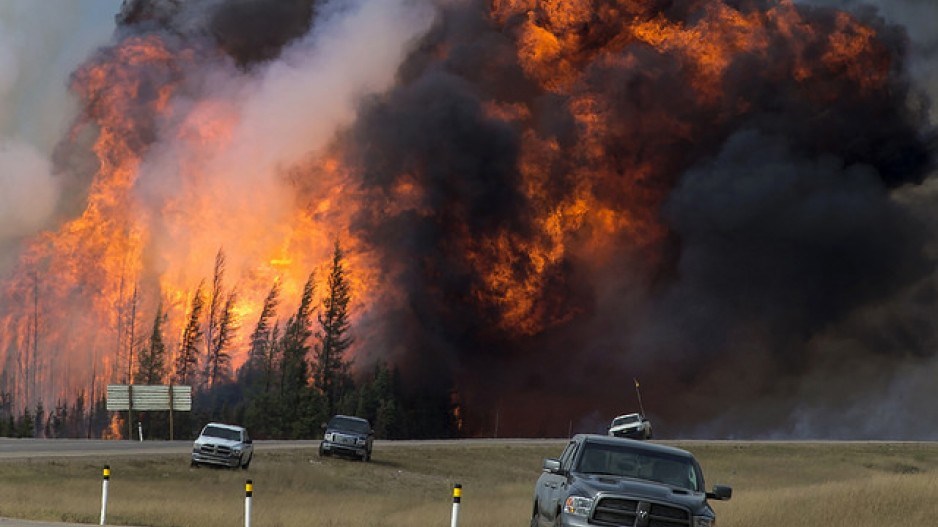The Insurance Bureau of Canada expects 2016 to be another huge year for insurance payments, mostly thanks to the Fort McMurray wildfire.
Severe weather insurance claims have been steadily rising for decades and climbing on an exponential curve since 2009 according to the Insurance Bureau of Canada (IBC). Steve Kee, the director of Media & Digital Communications for IBC said they’re forecasting at least $1 billion every year, up from $40 million annually in the 1970s.
“Prior to 2009, the insurance payouts to the policy holders as a result of severe weather, they really weren’t big notable events,” said Kee. “And today annual claim payouts of a billion dollars or more have become the new norm. And if you go back to 2013, and you include the Alberta and Toronto floods, insurance paid out $3.4 billion to policy holders that year, which was a record breaking year.”
During 2013 flooding in southern Alberta, the most expensive natural disaster ever for the ICB, created more than $1.72 billion in insured losses. Ice storm damage in Toronto cost an estimated $109 million and a 2013 rainstorm in Toronto resulted in an estimated $65.2 million in water damage.
The total costs of insurance claims for Fort McMurray are still unknown, although the Bank of Montreal previously forecast the disaster could cost insurers over $9 billion.
“We have no idea what the Fort McMurray numbers are going to be but I think it will be a significant number,” Kee said.
Insurance payouts from severe weather have doubled every five to 10 years since the 1980s. In each of the past six years they’ve been close to or above $1 billion in Canada. In 2012, losses were $1.2 billion and in 2014, losses were just under $1 billion. By comparison insured losses from extreme weather, which is now the number one reason for claims, averaged $400 million a year from 1983 to 2008.
Kee said a 2012 report they commissioned from The Institute for Catastrophic Loss Reduction titled Telling the Weather Story has become the association’s bellwether. The report states that “analysis reveals that the warming of the world’s climate system is unequivocal based on observed increases in global average air and ocean temperatures.”
Kee added the insurance industry almost acts like a forecast itself.
“Think of us as a barometer of what’s going on.”




